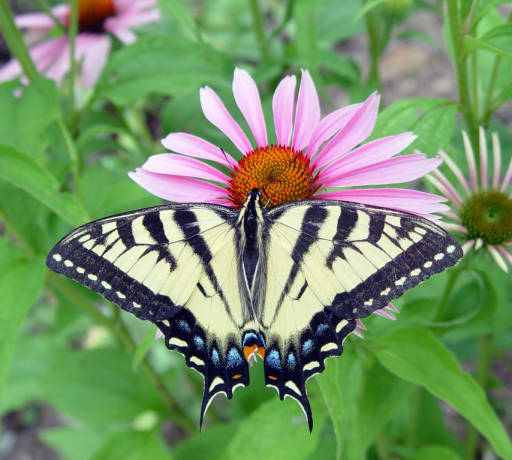A few weeks ago, I wrote about the importance of using native plants in gardening and landscaping. One of the main reasons for this is that it creates habitat for Minnesota’s pollinators, which include bees, butterflies, moths, flies, beetles, and hummingbirds. If you want to create habitat and food sources for all these different types of pollinators, who play a vital role in maintaining our ecosystems and our food production systems, there are a number of things that you can do.
The most obvious way to help pollinators is to plant native plants. Some plants can serve as host plants for pollinators; for instance, milkweeds are host plants for monarch butterflies because female monarchs lay their eggs upon them and they are the only plants the caterpillars can survive upon. Other plants, like asters, coneflowers, and blazing stars, can serve as nectar sources for adult pollinators. Because there are many different types and varieties of plants, and because they are often known by different names in different regions, it’s important to identify the plants that are native to your area with the scientific name. The scientific name of a plant, like Asclepias syriaca for common milkweed, should be listed on seed packets, in catalogues, and on websites. If you can’t find the scientific name of a seed or seedling in which you’re interested, I would recommend not buying it. To find out which plants are good for pollinators and native to Minnesota, I recommend the following websites:
- Xerces Society Great Lakes Region Pollinator Plants list
- Pollinator Partnership Ecoregional Planting Guide
- USDA Plants Database
- Wild Ones Native Plantings Webpage
In addition to plants, many pollinators also require water and places to shelter or overwinter if they stay in Minnesota year-round. Logs, dead branches, and small patches or dry earth can all serve as spots for pollinators, especially bees, to build nests or shelters. Some people also provide artificial nesting boxes for pollinators to help boost the population; you can read about that here. Bushes, trees, and large plants, as well as overhanging eaves, can provide shelter from bad weather to those pollinators that don’t have nests.
Finally, if you want to provide a safe space for pollinators, it’s essential that you don’t use pesticides- both herbicides and insecticides can be debilitating and even lethal for pollinators. Avoid spraying chemicals on your property, and don’t buy seeds that have been coated with systemic pesticides, since the chemicals will remain in the plant tissue and in the soil.
Remember, fall is the best time to create pollinator habitat in Minnesota, so I hope you get started today!
Photo: USFWS








